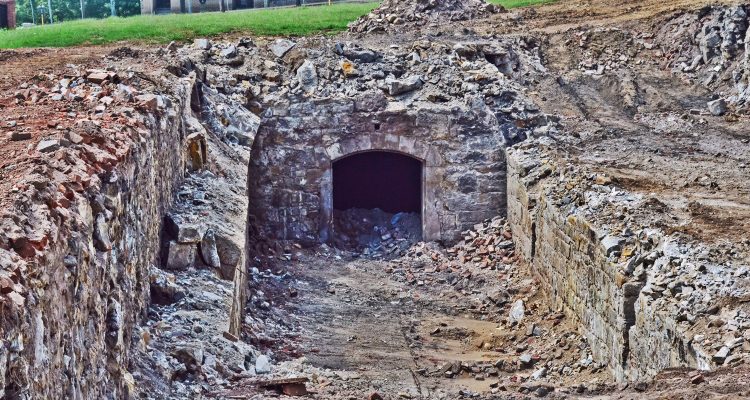People want it to be a tunnel, and they hope it’s part of the system that they’ve heard rumors connected to downtown Wheeling for as long as they can recall — something involving the Underground Railroad or maybe part of the history of mob activities in this Friendly City’s lore.
It’s just not. It’s a basement. Call it a “vault” if need be, but it’s really just a basement where, for this one particular, liquor, beer, and other soon-to-be-distributed goods were stored so those items would be out of the way from constant operations. And it’s not a mystery or a surprise because such underground structures have been discovered at several locations in years past.
“I even have to watch myself when I am referring to it because so many people keep referring to it as a tunnel,” said Rebekah Karelis, the historian for Wheeling Heritage. “It’s not a tunnel at all because it didn’t go anywhere. It’s a cold cellar, I guess we can say. The Welty family, around the mid-1850s, had a robust distribution business, and that’s why they needed that kind of space underground.”
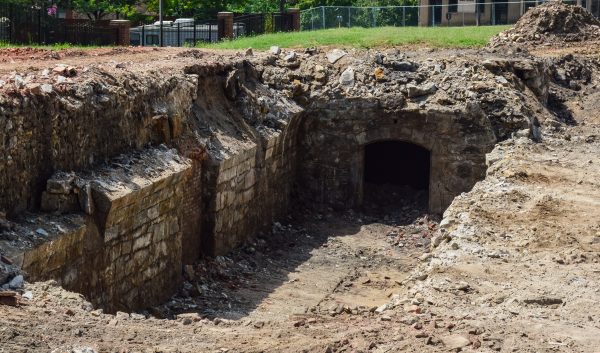
So is the legend involving a network of secret passageways existing in the downtown district simply an unproven myth?
“Technically, we do have tunnels under downtown Wheeling, but that’s because the utility companies have needed to create them,” Karelis explained. “But as far as a secret tunnel for the Underground Railroad? No. And if you think about it, those folks would have had to just run to the river for their escape.
“Now, honestly, it’s impossible for me to say that there are no tunnels because it’s possible, but there are no records that we have found to date that would indicate to us that tunnels were used to achieve freedom here in Wheeling,” she continued. “We do know that the Underground Railroad does have a history here in Wheeling, but there’s never been a mention of tunnels.”
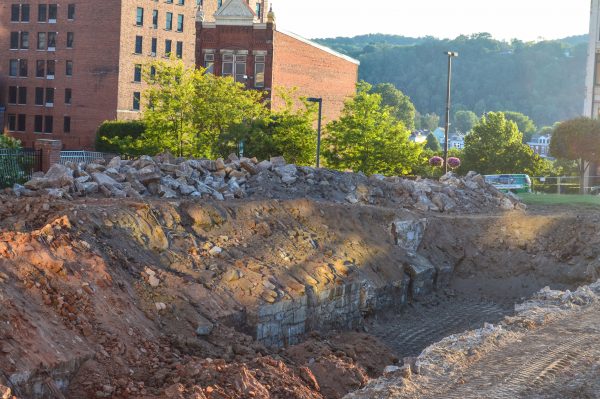
Did the Welty family construct the cellar, or was it constructed prior to the distribution business locating there? That’s a piece of history that is yet to be discovered at this time, according to Karelis.
“Although we don’t know a whole lot about the family, we do know they did have a large complex in a building that once stretched between Main and Market streets,” she continued. “There were two cellars along Market Street, and the one that was removed this week was the one that was beneath 1133 Market St., where a parking lot is now. The other one that was uncovered when the 1100 block was taken down was under 1137 Market St. The one found along Main Street was discovered beneath 1120 Main St., and I was able to access that one before the demolition.”
And it is still there, sort of. Before the razing of the former antique store on Main Street, Karelis ventured into it and collected a small box of china shards she found in the fortified cellar. That one, though, also will need to be removed just as this one was this past week to make way for the construction of The Health Plan’s new corporate headquarters.
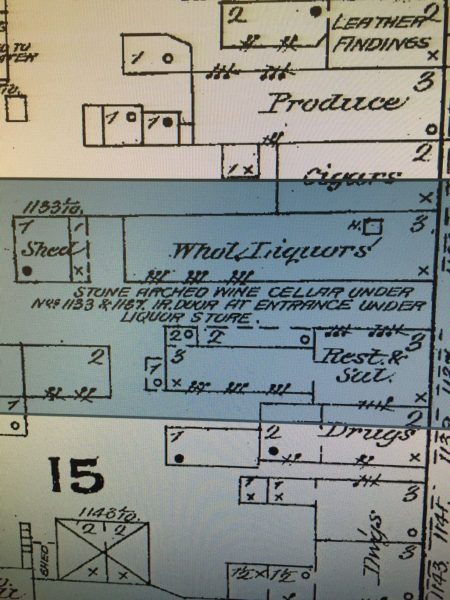
“I believe the cellar is still under there because they haven’t had to address that one yet,” Karelis said. “People have sent me photos of what they thought was a sink hole on the Main Street side, but that area is right where the basement is located.
“The vaults were simply used for storage for all kinds of things depending on what type of business was operating at those locations. The Welty’s likely used theirs for the storage of liquor and beer until the time came for those products to be delivered to their customers,” she said. “What makes the vaults very unique in the Wheeling area is the fact that at the time they were constructed, there weren’t a lot of stone structures around in the 1800s.”
According to Sarel Venter of Adventures in Elegance, such storage areas were created thousands of years ago out of need for product preservation.
“Vaults came to be when they ran out of caves to use,” he explained. “At first they would dig holes and place trees over them for the necessary coolness, and then they moved forward with the use of sedimentary stone and the construction of vaults such as the one we were able to see in downtown Wheeling.
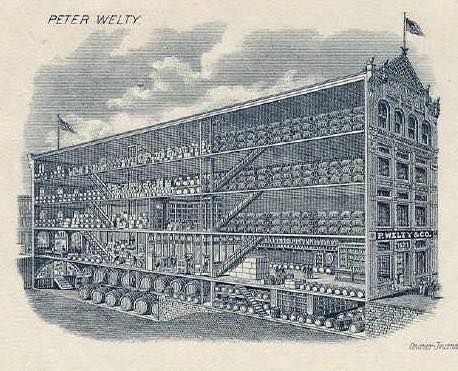
“In the beginning they had a very hard keeping them up, so that’s when they went to the arched openings when using limestone and sandstone, and that’s what we had here in Wheeling,” he continued. “And the arch allowed the structure to take on what weight they decided to put on top of it.”
Many in the Upper Ohio Valley were awed by the uncovered cellar, but most were not aware that it was not necessarily a new discovery in the Friendly City.
“A lot of people believe that this is a new discovery, but it’s really not. The one vault at 1120 Main St. was the basement, so the owners of that building were very aware that it was there. And none of them were all that deep either because they just needed to be under the ground so they the owners would have more room,” Karelis reported. “It was all about cold storage to preserve the products, and it was really an ideal area.
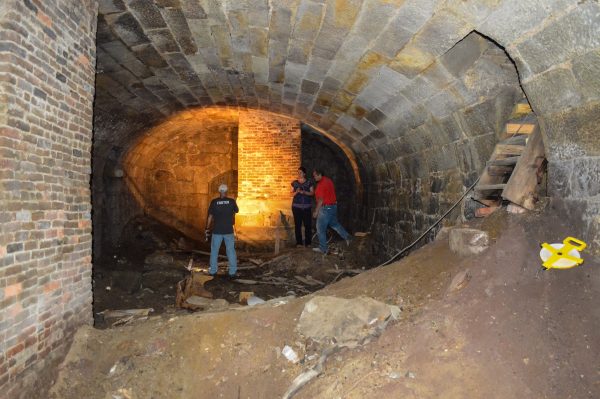
“The breweries that were in Wheeling at one time also had this kind of storage vaults for the exact same reasons,” she said. “It was, I guess, the technology that they had at the time, and it made all the sense in the world at that time here in Wheeling and throughout the country, really.”
The vault along Market Street has been removed since being uncovered because, much to Karelis’ disappointment, such a space would serve little purpose during the development and utilization of a large office building.
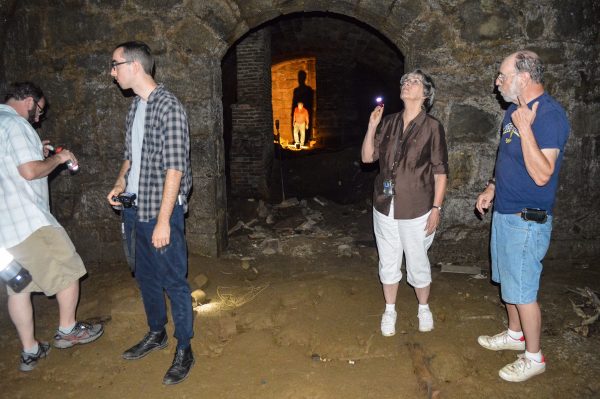
“Preserving the one recently uncovered on Market Street didn’t make sense, and I understand the reasons why completely. But what makes me feel better is that there remains an identical one on Wheeling Island,” she said. “They have great character, and you can tell there was great craftsmanship that went into building them. They tell a story about how people had to do what they had to do.
“The best thing we could do is document them and remember them and remember the stories that they tell,” she said. “Since the documentation has taken place, the history has been preserved, and that’s part of our mission here at Wheeling Heritage.”
(Photos by Steve Novotney; illustrations provided by Wheeling Heritage)


